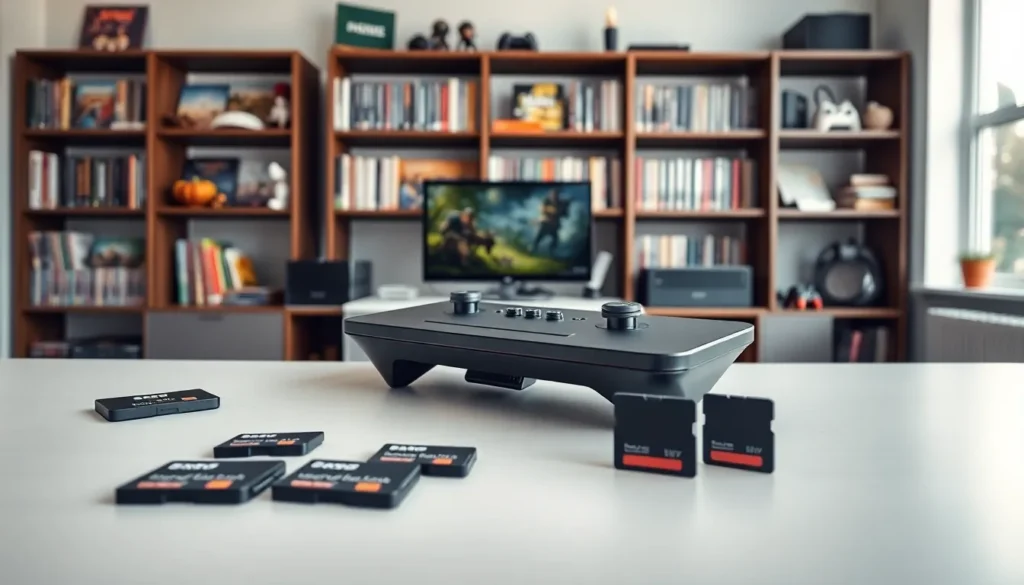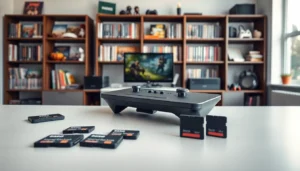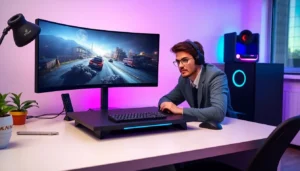Table of Contents
ToggleThe Steam Deck is here, and it’s a game-changer. But what if your gaming library becomes a hoarder’s nightmare? Worry not. Expandable storage is like adding an extra shelf to your beloved collection of games. In today’s world, where every pixel matters, having the right storage can mean the difference between smooth gameplay and a sad, buffering screen. Let’s jump into how you can enhance your Steam Deck with expandable storage, making that gaming experience truly epic.
Understanding the Steam Deck’s Storage Options

Built-In Storage Capacity
The Steam Deck comes equipped with three storage tiers: 64GB eMMC, 256GB NVMe SSD, and a whopping 512GB NVMe SSD. So it doesn’t skimp on space. But, depending on the games one plays, this built-in capacity might feel like a small slice of cake during a party. Larger titles can gobble up gigabytes quicker than you can say “download pending.”
Types of Expandable Storage
When it comes to expanding the storage on a Steam Deck, players primarily rely on microSD cards. These small powerhouses are surprisingly capable and can boost storage up to 1TB or more, depending on compatibility. Remember, all microSDs are not created equal: high-speed UHS-1 microSD cards are the crème de la crème for this task. They offer solid read and write speeds, ensuring your gameplay remains seamless, even with a packed library.
Benefits of Expandable Storage on the Steam Deck
Having expandable storage on the Steam Deck is like finding extra fries at the bottom of the bag, it just makes everything better. Here’s what makes it such a win:
- Increased Game Library: Store more games without constantly shuffling your favorites in and out of the built-in storage. Imagine diving into your library and seeing all those enticing titles ready to play.
- Cost-Effective Solution: Rather than racking up expenses from buying special editions or cloud storage options, a simple microSD card offers a punchy bargain, often for far less than console expansions.
- Easy Management: Adding a microSD is a breeze. No need for complex installations or tech skills. Just pop it in, and you’re good to go. It’s user-friendly, much like browsing your favorite game store.
Installing and Managing Expandable Storage
Choosing the Right Storage Type
Picking the right microSD card can feel like searching for a needle in a haystack. Not every card will do. Opt for one that has a UHS speed class rating of at least 1 to ensure reliable performance. Cards such as the Samsung Evo Select or SanDisk Ultra are among gamer favorites.
Tips for Optimizing Storage Space
Once armed with a microSD card, optimizing that space becomes crucial. Here are some pro tips to keep the gaming flowing:
- Manage Your Game Files: Delete games that aren’t in play anymore. Less clutter means faster loading times.
- Use External Storage: Consider external SSDs. These can be connected via USB-C and offer faster access compared to microSD cards, especially for the larger game files.
- Regular Maintenance: Routinely check your storage settings and file sizes. There’s nothing worse than getting ready to play, only to find storage is full.







